Final year project
Recollections May Differ [Read more]
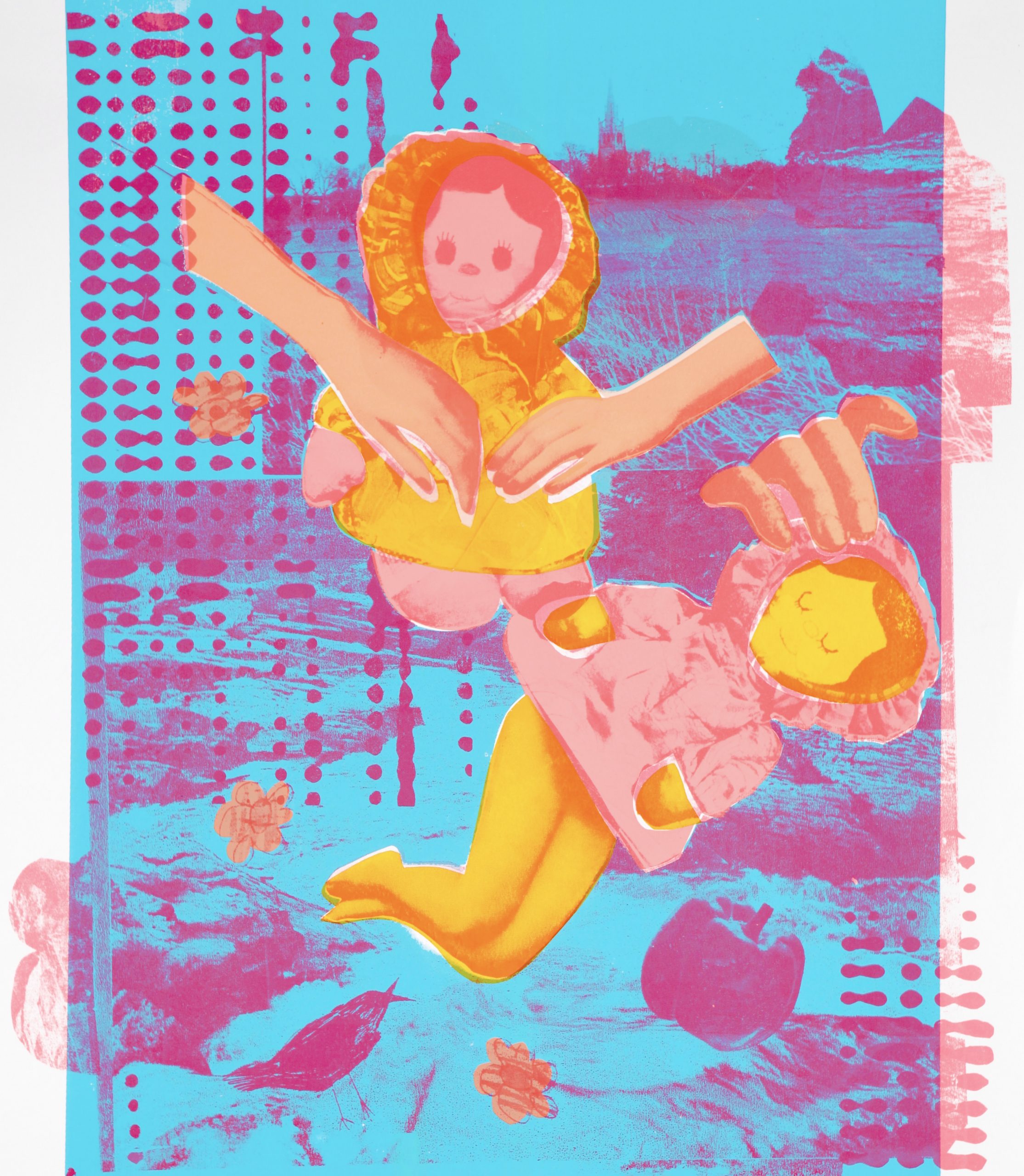
Happy-Sad Twins
A1 Size Screen Printed piece. Imagery produced by collaging together acetate sheets which were then photographically exposed onto the screen, before being hand-printed onto paper.
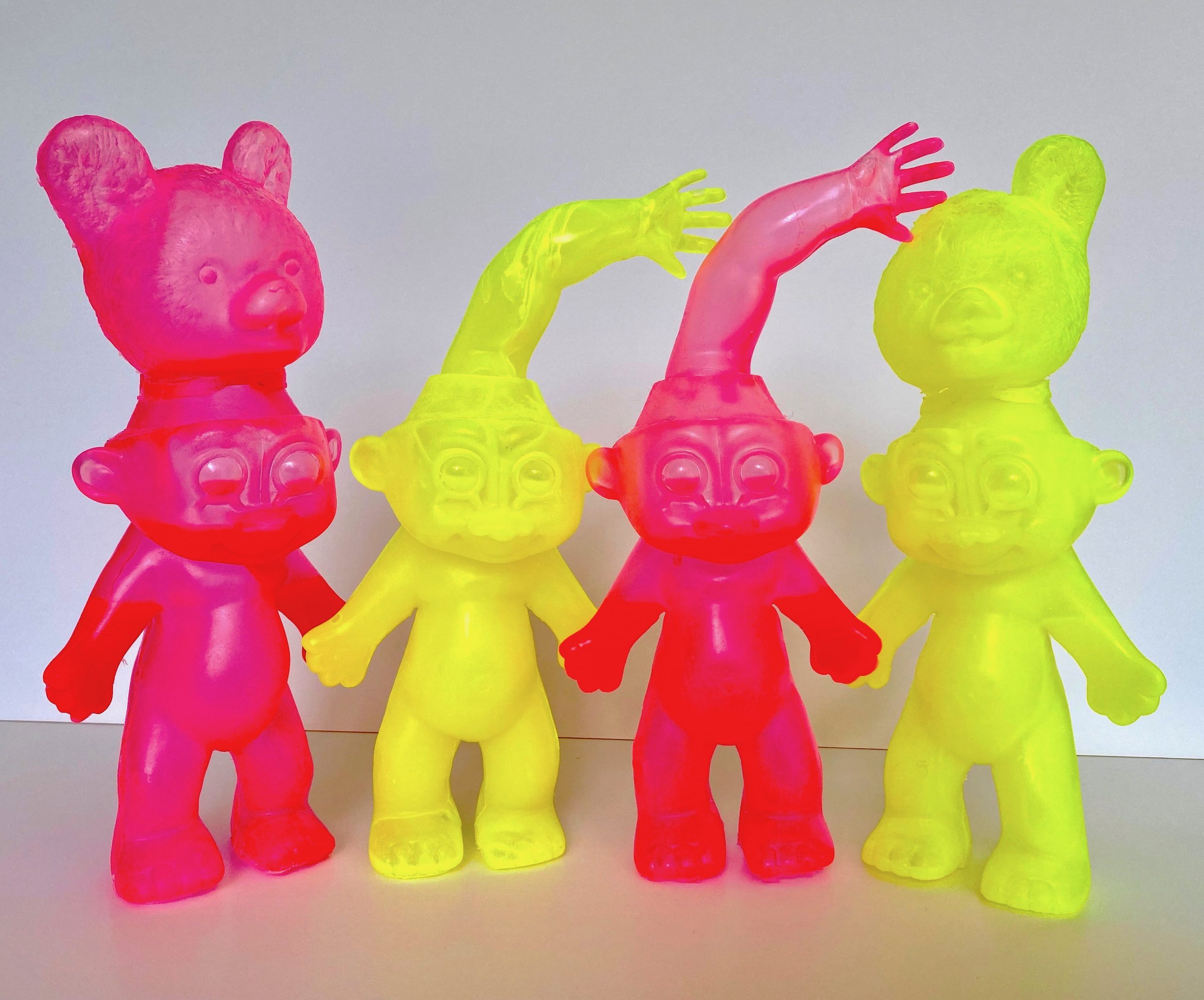

A series of resin sculptures created from discarded children's toys such as vintage troll dolls, bears and baby doll arms. The components have been re-assembled into new configurations and cast to create these unusual new forms, which were then replicated to produce multiples of the colourful objects.
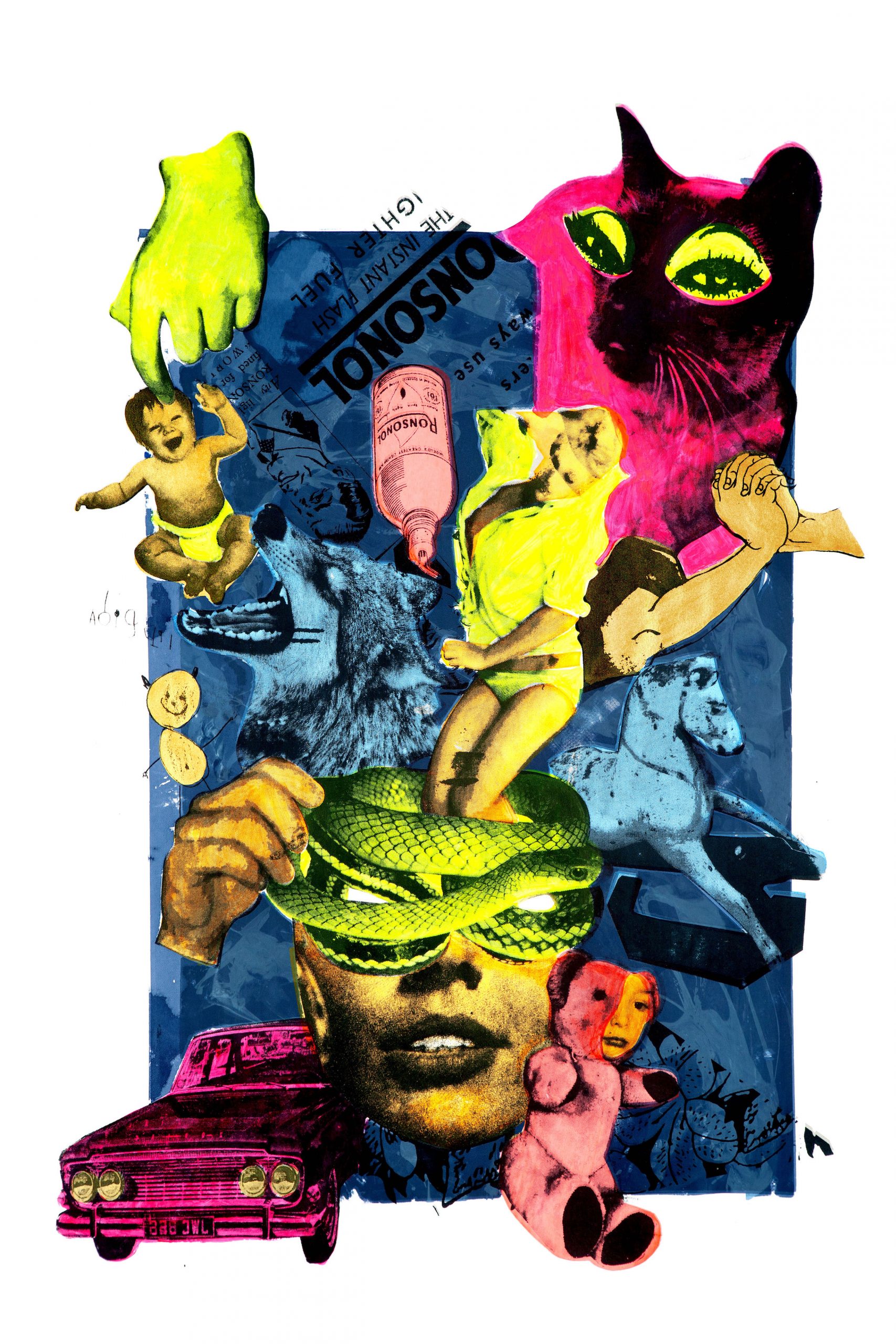

Snake Eyes
A1-sized Screenprint on paper with gold metallic accenting.
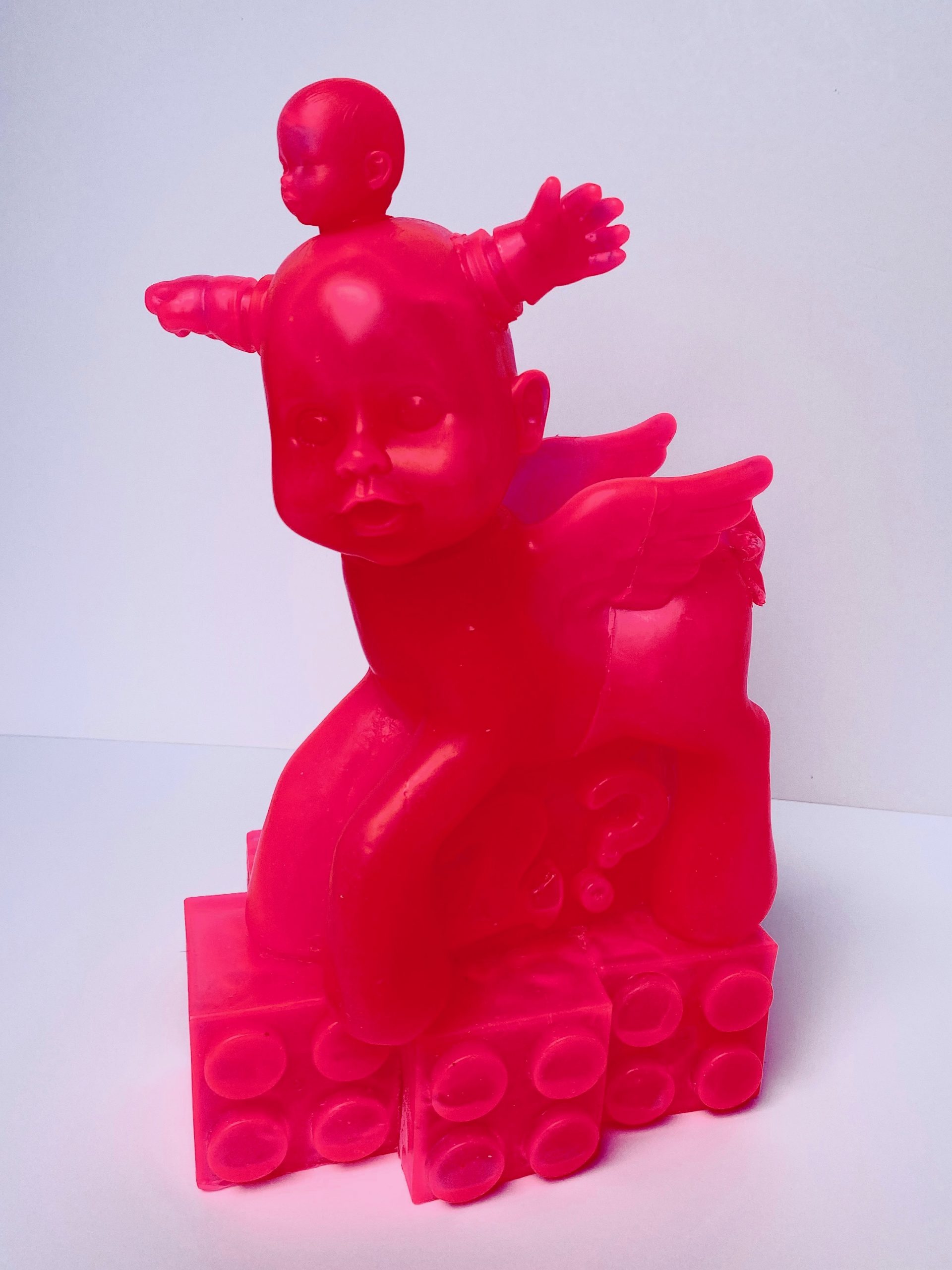

One half of a resin sculpture, created by assembling discarded childhood toys into a sculptural form before moulding it in silicone and casting. This sculpture is composed of multiple forms such as a My Little Pony's body, baby doll's head and arms, building blocks and alphabet letters. This sculpture is designed to interlock with another resin sculpture.
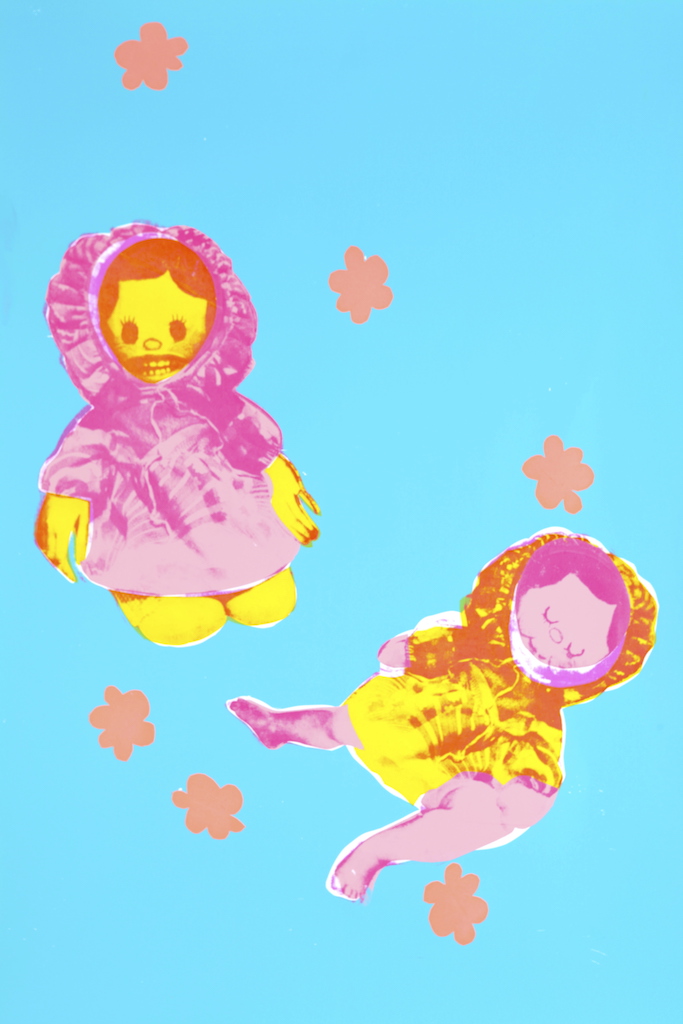

A1-sized hand-printed screen printing paper. Imagery produced by collaging together acetate sheets which were then photographically exposed onto the screen. Stencils were used to remove imagery and also add graphic shapes such as the flower silhouettes taken from children's drawings.
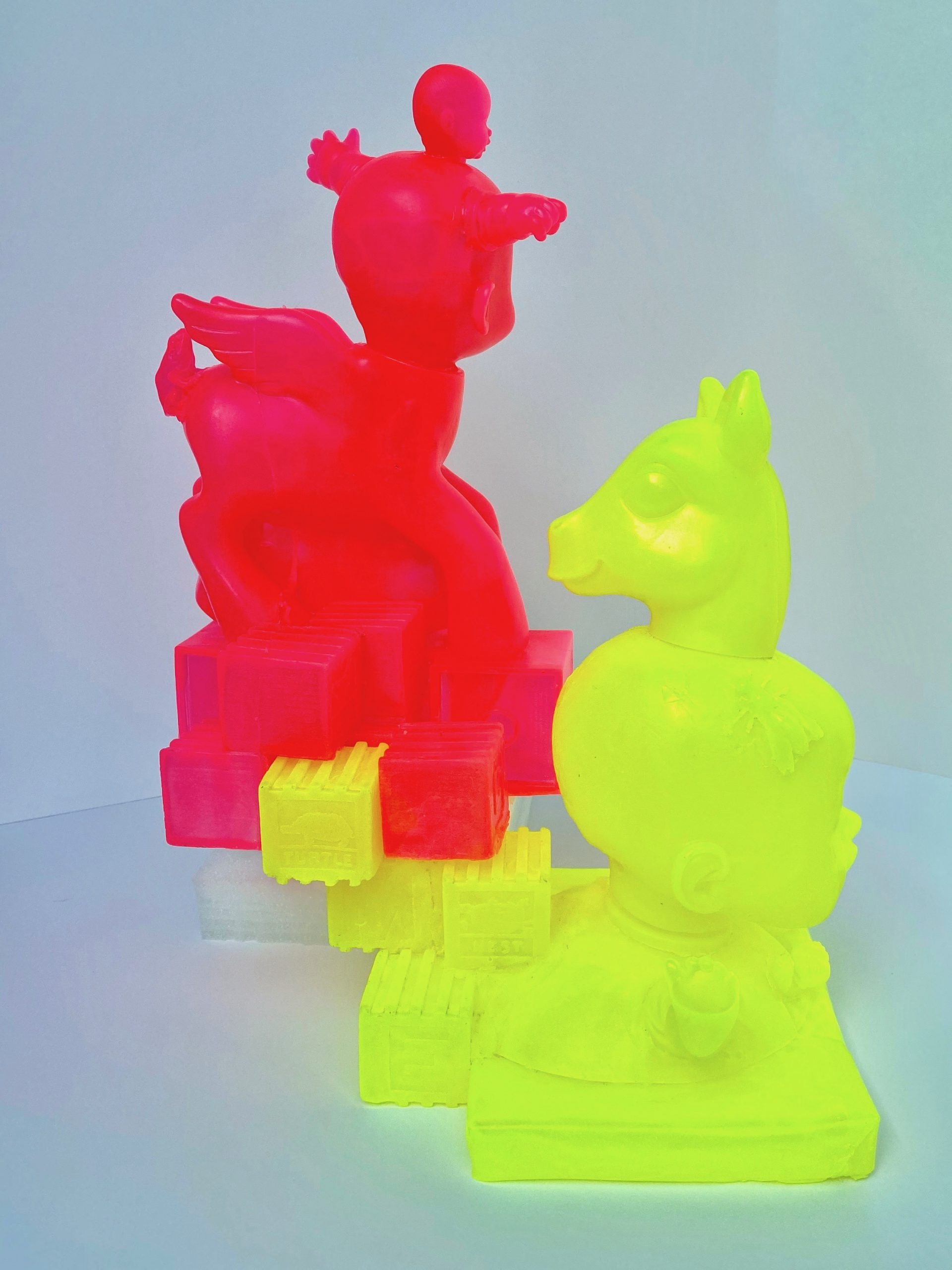

Interlocking resin sculpture, created by assembling discarded childhood toys into sculptural forms before moulding it in silicone and casting. The fluorescent pink and yellow elements lock together to form one piece.
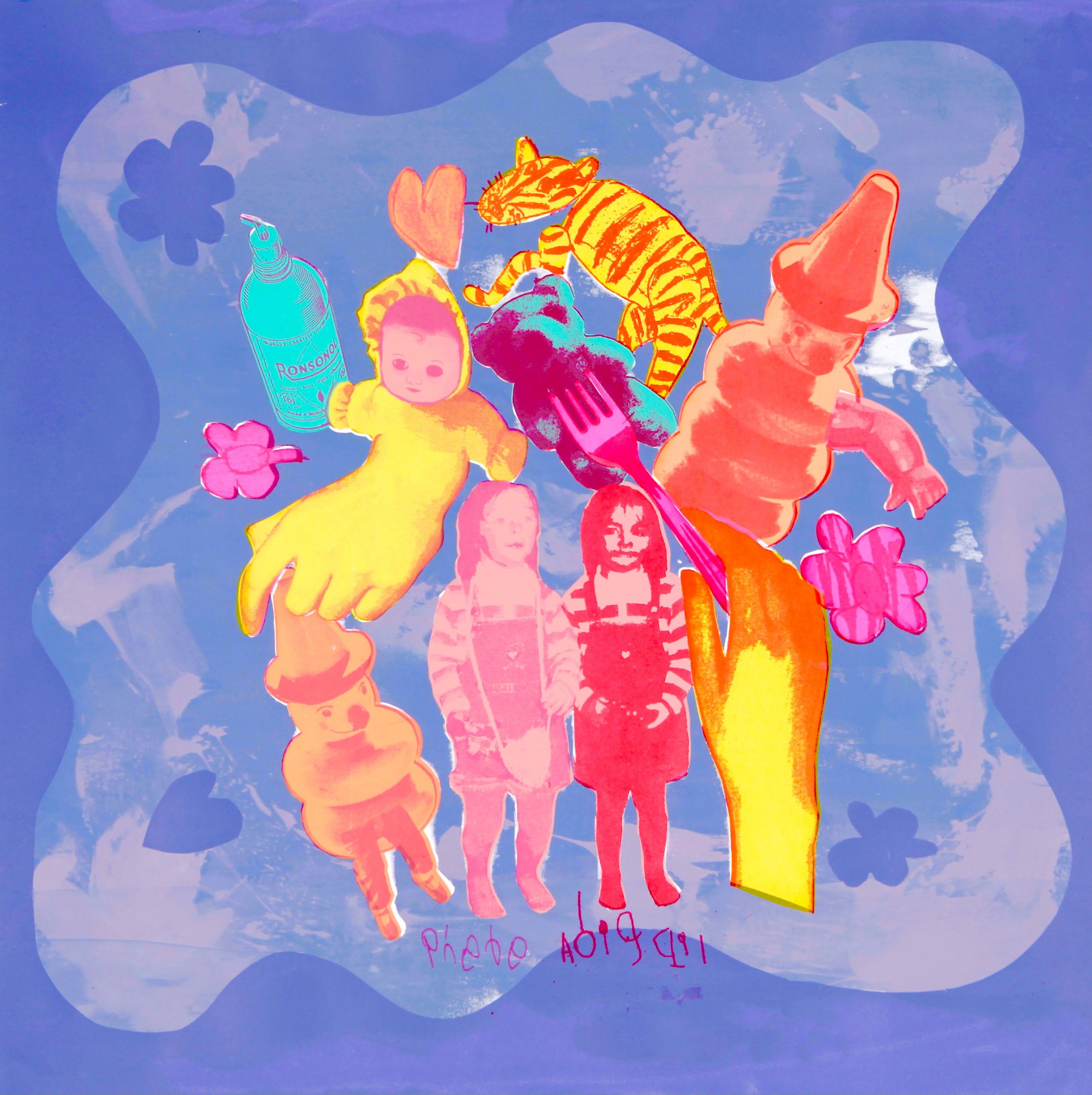

A1 screenprint created using two separate screens with images that lock together to form one print. The imagery used within the collaged composition includes our own childhood portraits, signatures, drawings, toys and surreal hybrid creatures.
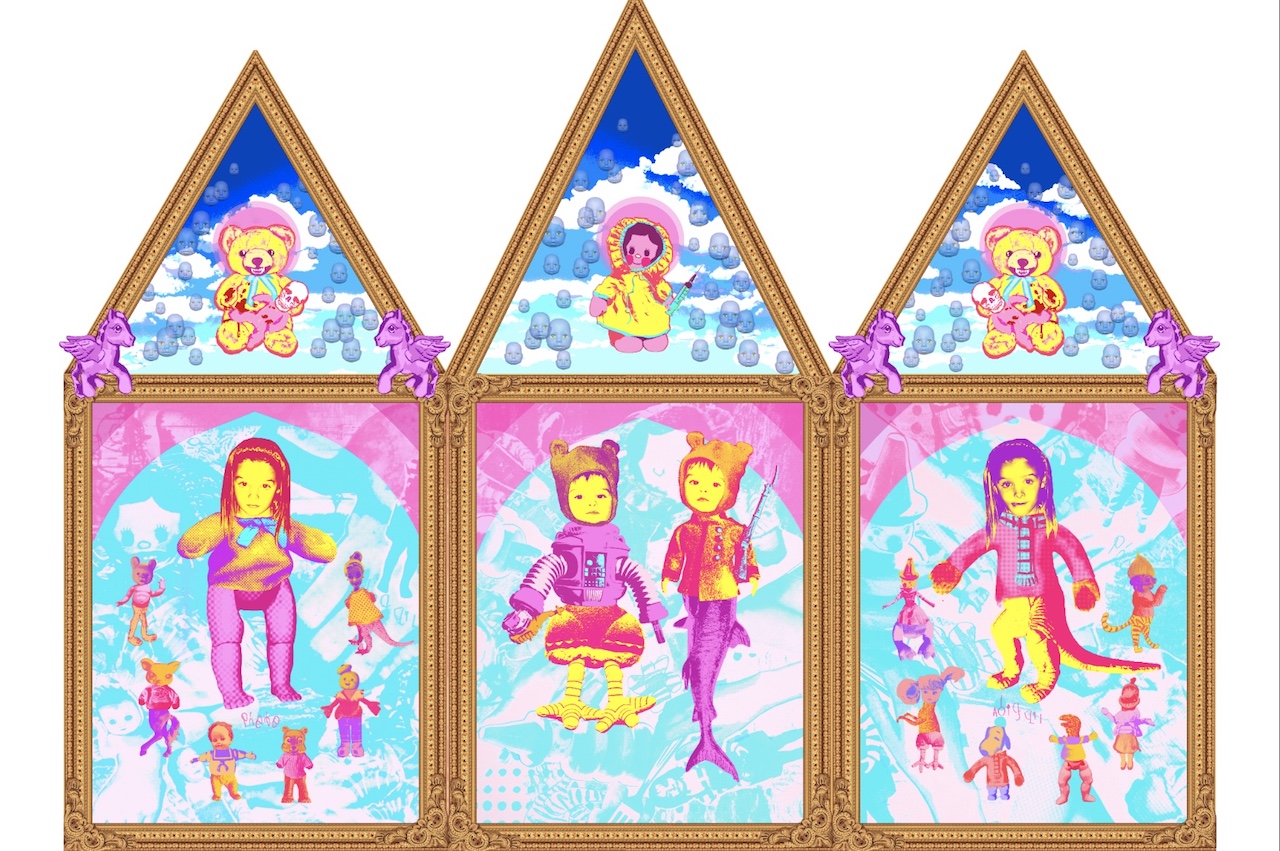

Digital collage work designed for a 198cm x 270cm sized installation piece made from three lightboxes. The work was inspired by Rachel Maclean's digital artwork and is influenced by religious iconography. The baroque style frame is composed of hundreds of small baby doll faces, hands and troll doll faces. Many of the repeating images present in the digital collage are recognisable as motifs or images from our previous screenprint collages or sculptures.
The colourful figures within the frames incorporate images of our faces as children, with mismatched body parts. The mismatched faces are built onto impossible toy body parts and familiar pop culture figures to create uncanny new 'characters' and identities inspired by the Chapman brothers' 'Exquisite Corpses'.
Abigail Hughes
I have collaborated on this project with my sister Phebe. Our work is heavily influenced by our shared childhood memories and unique experience growing up as identical twins.
We work across a variety of media and processes, including; screen printing, digital collaging and photographic exposure, physical collaging techniques using both 2-dimensional and 3-dimensional material, casting and sculptural work.
Our work uses these processes to playfully explore the themes of identity, memory and childhood.
Although autobiographical, we use the concept of nostalgia to connect with the viewer. Using pop-culture references, religious iconography and familiar objects from the past to encourage them to delve into their own memories and past, and question their perception of reality.
Our collaged screen prints and digital prints are playfully misleading, using garish, bright colour palettes and overwhelming, busy compositions to play mind games that tease the eyes and engage the senses.
The primitive, childish aesthetic style and childhood imagery suddenly become sinister on closer inspection. Their juxtaposing uncanny and grotesque imagery is hidden in plain sight, shattering the viewers initial cheerful, bright perception of the prints.
Our use of three-dimensional work aims to expand the viewers' senses, even more, prompting them to further question the concept of memory and their own reality. The familiar, discarded toy components, from which the sculptures are cast, are intended to trigger a sense of nostalgia. Their balloon-like appearance is unusual and visually playful.
The collaborative process of our work reflects our unique relationship with the notion of identity and memory, which feels shared as identical twins. Using disconnected parts of whole photographs or toys, we collage/assemble them in new contexts. Reflecting how the perception of yourself and your childhood memories are extracted from the past and pieced back together- like a collage, then often viewed through rose-tinted spectacles.
We were inspired by artists such as Rachel Maclean, fellow collaborative artists Gilbert and George, Jamie Andrews, Jeff Koons and Mike Kelley.
Final year project
Recollections May Differ
Awards
Before coming to Loughborough, I was awarded the Lower Sixth Prize for Art, followed by the Mervyn Peake Memorial Award for Art in my final year at school. I then achieved a merit in my one year Art Foundation at Loughborough, before continuing onto the BA Fine Art course.
Work Experience
I enjoyed work experience at the Gerald Moore Gallery in South East London, working as part of a team creating and running art workshops for primary school children. I faced the challenge of adapting quickly to work collaboratively with younger audiences, in a way that would keep art exciting and engaging for them. The experience helped me to build on leadership skills, patience and introduced me to the opportunities and ideas that can arise from working collaboratively.
I had the amazing opportunity to work for a week at The Radio Times art department and picture desk, laying out page formats and making photographic and text decisions. I learnt about the methods used to print and assemble physical magazine copies, but also how the magazine has adapted to media moving online. The experience was really rewarding, giving me confidence by providing an insight into how art is applied to this industry. As well as, highlighting my skills in composition and layout which I utilise through my screen printing practice.
During my experience working at Concorde Graphics Ltd, I learnt about the printing industry, large scale digital printing, advertising print and their installation. I helped with packing and distributing orders, this took a lot of organisational skill and physical effort. By highlighting the commercial side of printmaking, I was able to directly compare the modern print-making technology to my own practice using historical screen-printing methods.